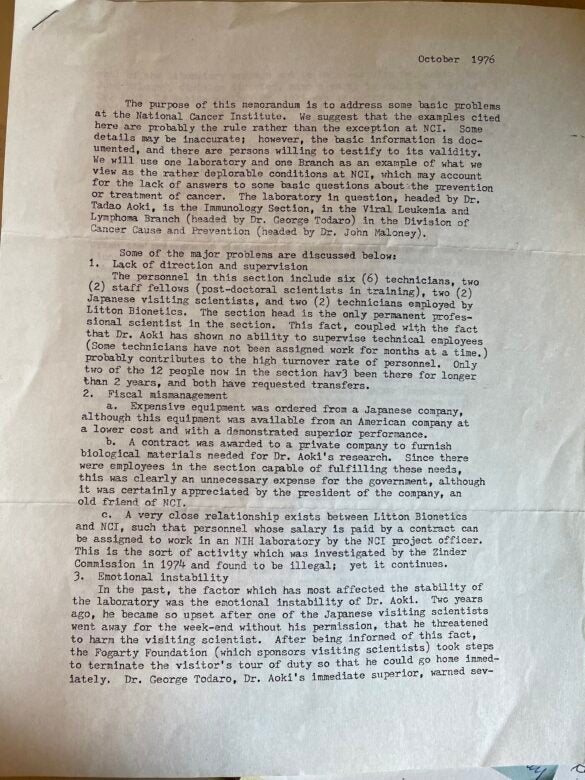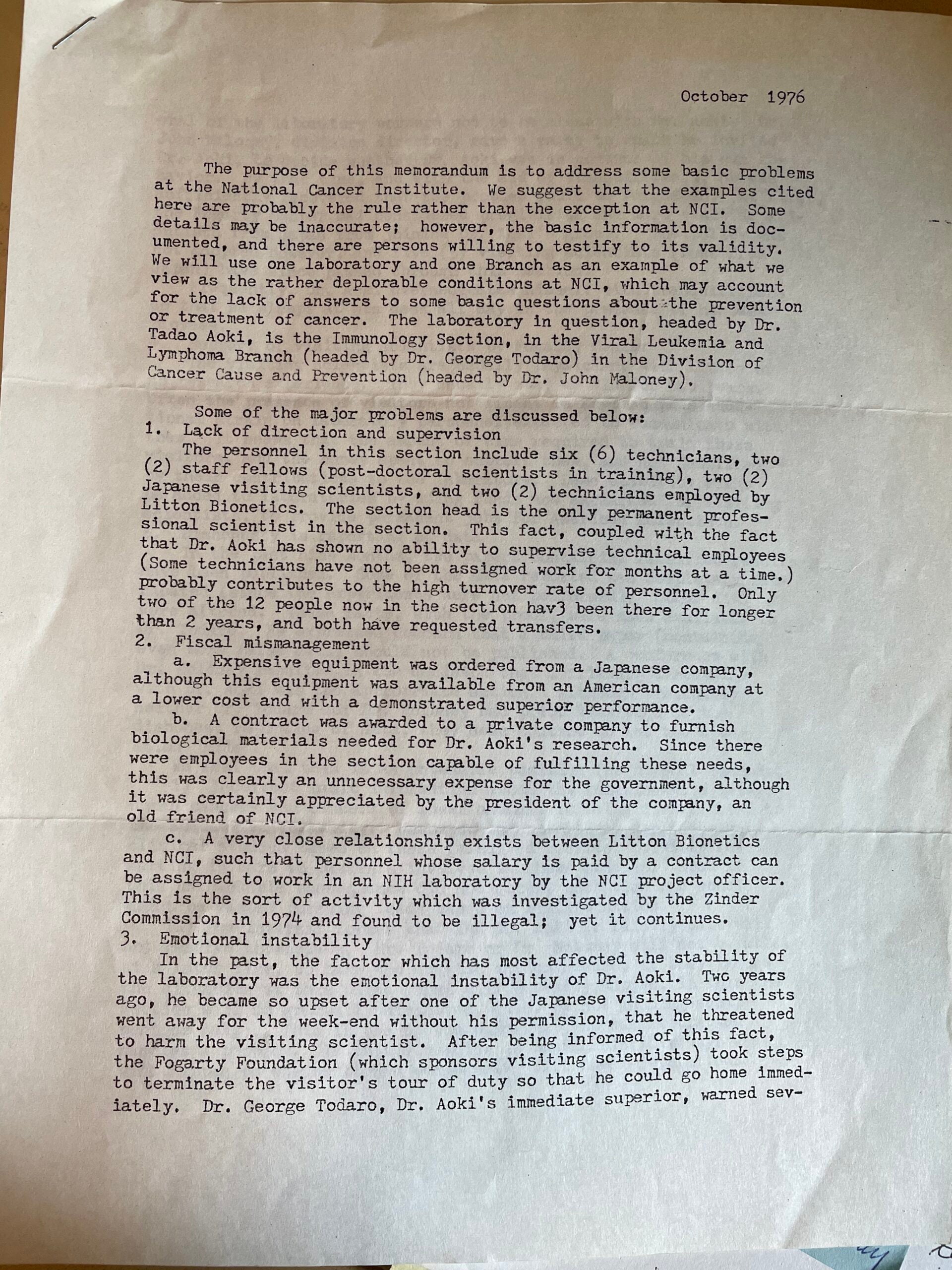
What was happening in the Aoki Lab? The first few issues cited in the memo were serious, but not hair-raising. There was a “lack of direction and supervision,” such that some lab members were without anything to do “for months at a time.” To this was added “fiscal mismanagement,” i.e. corruption. For example, a contract was given to a company to supply “biological materials” for research. These materials could have been produced in-house, presumably at less expense, but the president of the company was an “old friend of NCI” and thus got a contract.
Then there was the falsification of data. According to the memo, “two papers containing falsified results have been published. Some of the data was completely fabricated (since the experiments were not performed); other data were altered.” Given the nature of the research being performed – or, in this case, not performed – the consequences could be far-reaching. “Incorrect basic information about the relationships between human cancers and cancers of lower animals is being disseminated to the scientific community. Unsuspecting scientists could design clinical studies based on these falsified results, possibly resulting in harm to patients involved in these studies. Even if this unthinkable consequence did not occur, much time and money might be wasted pursuing leads based on misinformation.”
And then things got weird. Aoki himself was evidently struggling with significant personal and/or psychological problems. He was reported to have become so “upset” that a “visiting scientist went away for the weekend without his permission that he threatened to harm” him. He was said to “overmedicate himself with tranquilizers so that he sleeps at his desk all day in the presence of his employees.”
The strange thing about all this, though, was not Aoki’s behavior in and of itself, although it was highly unprofessional and, in the case of the threat to the visiting colleague, warranted removing Aoki from his position immediately. What was weird was the reaction to all this on the part of Aoki’s supervisors, George Todaro and John Maloney. They decided that as far as the falsified data was concerned, “a friendly discussion with Dr. Aoki was the appropriate action…they seem content to let the situation ‘ride.’” The visiting scientist whom Aoki had threatened had been sponsored by the Fogarty Foundation, and as soon as the foundation found out about this they “took steps to terminate the visitor’s tour of duty so he could go home immediately.” (Why they chose to remove the person who had been threatened rather than directing their attention to the person issuing the threat is unclear.) Todaro “warned several of the laboratory workers not to be alone with Dr. Aoki,” but other than that, no formal action was taken. “The Fogarty Center had considered prohibiting any more visiting scientists from Japan from joining Dr. Aoki’s group,” but in the end they did not take this step.
Informally, however, Maloney decided to investigate further. He “gave a party to which he invited Dr. Aoki, to decide whether Dr. Aoki was in control of his own behavior. By that time, and with the aid of tranquilizers, he was sufficiently recovered that the problem could be forgotten.” That Maloney thought inviting Aoki to a party was a reasonable way to assess his fitness to continue in his position speaks volumes about the 1970s, the NCI or possibly both.
The document closed with what was probably among the finest understatements ever included in an NCI memo:
Perhaps, a closer look at the misuse of personnel, public money and public confidence is in order…This may be the time to reevaluate the contributions the Virus Cancer Program [which employed Aoki and Tadaro; Maloney was its director] has made toward the prevention or cure of cancer…maybe a major change in research direction is necessary.”
The irregularities described in this memo occurred in 1976, several years after the Virus Cancer Program had been subject to a thorough review and found lacking on a number of levels. What was this program, and why was it so peculiarly prone to problems? Find out here.
1 The memo can be found in the Norton Zinder Collection, Series: Rockefeller, Box 24, Folder: 1976 general correspondence.
